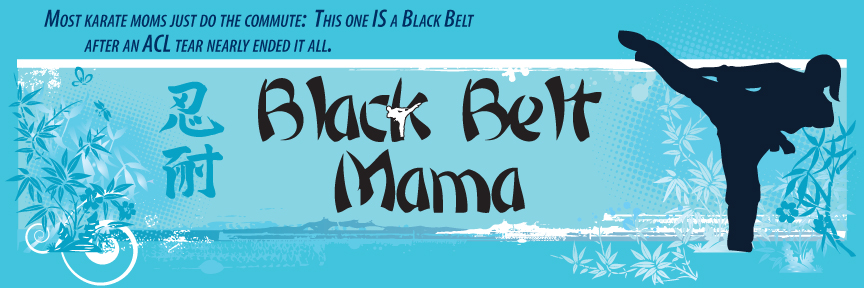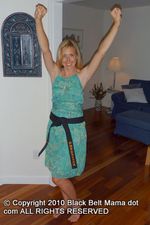March 30, 2009
Deepening the “Way”
By Maj. Bill Hayes, USMC (Ret.)
“Old Student” of Shobayashi-ryu Karate-do
Each of us engaged in serious martial arts training has a desire to develop our martial skills to the fullest – it would make no sense for us to commit to hard and complex training in a traditional or classical dojo with the full intention of remaining unskilled. Yet, when some of us examine more closely what it is we actually doin the dojo we may come to realize that we are, at least on occasion, impeding our own develop.
Take, for instance, our desire to develop “warrior mindsets” when involved in application training. The mental aspect of such training is meant to bolster our physical ability to inflict necessary, ethically justified, injury upon a real attacker. Accordingly, one would be foolish to approach such a “heavy” endeavor with the same attitude one might bring to a “lighter” weekend tournament match. Tournaments, despite their many manifest benefits, do not, as a matter of course, place us in peril of losing our lives or being maimed. Tournament fighters often operate with the understanding that a match may last for several minutes, during which time fighters can execute strategies and tactics while protected by the rules of fair play, good officials, and a pound and a half of safety equipment.
On the other hand, “Life Protection” practitioners well understand (and accept the fact) that their next physical engagement may be their last one and, rather than thinking that they have several minutes to “do their stuff” (score points), their overriding concern is the death or disablement of the opponent in front of them – right now. (Remember that when it comes to Life Protection the fundamental mindset involved is always a quantal one – your opponent will live or your opponent will die – or – you will live or you will die.) Hard-core, yes, but “appropriate” if our arts are to have combative substance, and vital if we are to survive the emotional burdens which routinely accompany and follow true encounters. By the way, we can have such depth without also having too much “darkness.”
When I was a young Marine studying in the Kin Village Rendo-Kan Hombu dojo on Okinawa, my teacher (Shimabukuro, Eizo, 10th Dan, Shobayashi-ryu Karate-do) related numerous stories of Life Protection encounters from To-de's early days. Shimabukuro, OSensei, recounted these events with great zeal after our daily training sessions and I never failed to marvel at them for their own sake as well as for the cultural and mindset contrasts they represented. For instance, in America, should a police officer, acting in the line of duty, be forced to draw his or her weapon and shoot an assailant they are immediately suspended from regular duties, their weapon is surrendered, and they are often told to see a "shrink," or some other counselor, "first thing Monday morning." On Okinawa-if a "Just Warrior" were forced to use his or her skills in defense of life and society-and did so successfully-they were given a party! Such warriors were welcomed back to their village with songs, dances, and a feast! Even the old Ryukyuan justice system was structured to facilitate such occurrences. Back then, if a "Just Warrior" was, for some reason, required to submit to arrest following a Life Protection incident, his fellow villagers were allowed to petition local authorities for his release. Not only was the release routinely granted, but, such "Bushi" were often subsequently honored by their feudal Lords with additional lands and titles for their courageous deeds. Quite a far cry from where we find ourselves in today's society.
Now, as a practical matter, how does one begin to train to develop Life Protection mindsets of old in today’s modern era? Initially, I recommend two basic “tools” – the first mental, the second physical – both involve our martial culture vessels – our kata.
Mental– live out of your imagination – not just your memory. Recall that imagination involves visualization (within kata) while memorization involves rote performance (of kata). Moreover, memorization leads to making choices made by others (executing the same “block”, responding with the same punch or kick – each and every time). Visualization, on the other hand, allows you to make choices possibly nevermade by anyone else before – a situation which you may face during a real encounter on some tomorrow. One method molds but limits you – the other frees you to perform response based movements – the essence of intuitive competence. Memorization is imposed from the outside and is fine during the “shaping” process which takes place during the first several years of training in dojos. Visualization is a product of your inner self and is an extension of skills displayed by dojo seniors (in good dojos).
Physical– this one’s really simple. While moving from memorization to visualization imagine or train with a partner who is holding an actual weapon. (The weapon can be a very short stick, a set of sai, or a Bo – using them all will force you to better appreciate the basic distances [near, mid-range, and far] as well as help you explore a slew of new angles – no matter what applications you’re working on.) Visualizing or actually facing a weapon will create a sense of urgency and also stirs a set of physiological responses which help prepare the body for combat – the adrenaline rush, increased heart rate, and more, can be “force multipliers” should Life Protection ever be necessary.
With respect for all that you are,
Bill Hayes
Bill Hayes is the award-winning author of, “My Journey With the Grandmaster.” He publishes a quarterly martial culture newsletter; is a “warrior wellness” consultant; and conducts seminars in the U. S. and Europe. He is a founding Subject Matter Expert for the U.S. Marine Corps' Martial Arts Program, is the Director of the Okinawan Shorin-ryu Karate-Do Research Society, and is also Director of the Shobayashi-Kan Training Group. You can reach him directly regarding any of the above by emailing him at oldstudent1 at cox dot net.
























Training with real weapons in both a pre-arranged and extemporaneous fashion has greatly enhanced my training in all facets. Like you say – there is something about the ‘real thing’ coming toward your face with velocity that puts a person in the mindset of life protection. It may not be the prettiest, but it forces you to work in the moment.
Great post Hayes Sensei!
ok
Great post! Even when working with real uki’s, it’s hard to keep in mind that many of the things we do could save our lives one day.